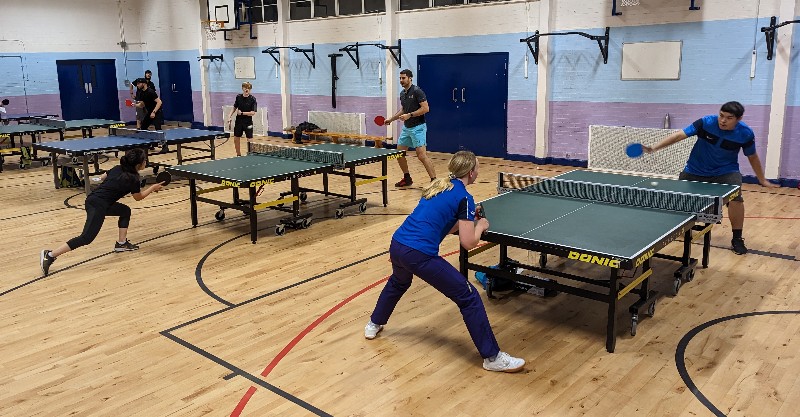Subscribe to Updates
Get the latest creative news from FooBar about art, design and business.
- Chris Wilder: Sheffield United return is ‘a unique situation’
- Who Is Virat Kohli Wife? A Look at Virat Kohli’s Personal Life
- Flyers GM Daniel Briere confirms Carter Hart will not return to team after sexual assault charges acquittal
- Fantasy basketball: Roto and category league rankings for 2025-26
- BJK Cup: Italy reach semi-finals as Jasmine Paolini and Elisabetta Cocciaretto secure 2-0 win over Japan
- Liam Pitchford to miss Europeans with hip injury
- Biggest 2025 success, failure for all 30 MLB teams
- ‘The Ryder Cup will be on Concorde’: when Europe won in the USA in 1995 | Ryder Cup
Browsing: benefit

Most table tennis clubs donâ€t have structured training. The format is usually something like this … You turn up. You find someone to hit with. Sometimes this will be a decent player. Other times it will be someone of a much lower ability. You might play with the same person all night. Or maybe youâ€ll play with two or three different people. Thereâ€s no training structure. You are free to do whatever you want.
In this scenario, some players fall into the trap of training without a purpose. They do a lot of forehand to forehand or backhand to backhand. Or they hit a lot of balls randomly. Or they play a few matches in the same way they always play matches. Players will get some benefit doing this – table time if nothing else – but they arenâ€t developing their skills as much as they could do.
To solve the problem of the unstructured club session, try this approach instead. Before every club session, set yourself one clear goal. What do you want to improve during the session? It could be something physical, technical, tactical or mental. And then try to develop this skill in the 1, 2 or 3 hours you are playing at the club.
For example, letâ€s say your goal was to improve your forehand loop vs backspin. Itâ€s not a shot you feel confident using in matches. When you try, it usually goes wrong. So you revert to pushing instead.
You go to your club session and you find someone to play with. You have a warm-up. A little forehand to forehand, and then backhand to backhand. Now you say to your partner “Iâ€m trying to improve my forehand loop. Can we do a drill to work on this? Iâ€ll serve backspin, you push to my forehand and then Iâ€ll try my forehand loop?â€.
Do you know what your partner will say? 9 times out of 10, it will be an enthusiastic “yesâ€. Maybe your partner also wants to work on his/her forehand loop too. You can take it in turns to do the same drill.
After the drill you might then play a conditional game. Two serves each, first to 11. But every point has to start with a backspin serve, push to the forehand and then a forehand loop. After that, anything goes. But you both get to practice the forehand loop in a match format.
When you are doing the drill or playing the match, you are likely to have a couple of outcomes. Maybe you make a lot of errors. Your freehand loop keeps going in the net or off the end of the table.
These errors are useful. You can learn from them.
You might need to do a bit of self-coaching, but try and work out the cause of the error. Maybe you have to change your bat angle or your swing trajectory. Or maybe you have to brush the ball more. There will be some trial and error, but your goal is to improve your consistency. If you finish the club session with a clearer idea of how to execute your forehand loop, you will have made good progress.
Or another outcome is that your forehand loop is really good. You do it in the drill and it works most of the time. You do it in the match and you win points. This will build your confidence to actually use your forehand loop in a real competitive match. Again, you finish the club night having achieved something very useful.
An unstructured club night can actually be really beneficial. You can choose exactly what you want to work on. You can be specific in choosing something which is very relevant to your game. But you have to put the effort in. Select one clear goal. Do a mixture of drills and match-play to develop the skill. Be disciplined and focus on this skill for most of the club session. Then evaluate – what did you do well? What could you do better next time? Keep repeating this process and you will develop your skills much more than other players.
Training drill library
If you would like some training drill ideas, I recommend you join Tomâ€s TT Academy. In my online academy, you will get access to my training drill library. Every training drill includes a video demonstration, plus technical tips and ideas to make the drill easier or harder.
When you join my academy, you will also get access to a wide range of exclusive coaching content, including:
- in-depth courses
- technique analysis
- live sessions
- robot training videos
- fitness videos
- member discussions
- skill challengesÂ
- and lotâ€s more!
You can access all this content for less than £1 per week. New content is added regularly. Join hundreds of table tennis players around the world today at tomsttacademy.com
Get more table tennis tips
Sign up for my popular table tennis newsletter and Iâ€ll send you tips, tacticsÂand training drills to help you improve. Plus get FREE access to my Table Tennis Foundations online course.
Thank you!
You have successfully joined my subscriber list.
![]()

